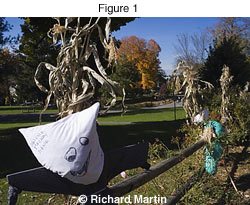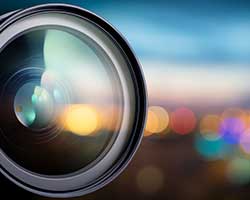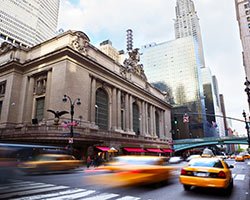If given a choice, I would much prefer to carry a tripod at all times since it allows for unlimited creative freedom with very long exposure times, smaller apertures, and lower ISOs. When using one is not permitted however, it's important to have some tricks at your disposal so you don't go home empty handed.
Inside the highly trafficked temple of the Lincoln Memorial, Park Rangers are quick to deliver the phrase no photographer wants to hear; "No Tripods Allowed." This restriction coupled with the low light conditions presents a terrific creative challenge for those looking for sharp enlargements. Yet, as Lincoln himself said, "Always bear in mind that your own resolution to succeed is more important than any other." When a tripod is not possible, don't settle for soft images. Here are some guidelines to consistently capture sharp photos.
Choice of Shutter Speed
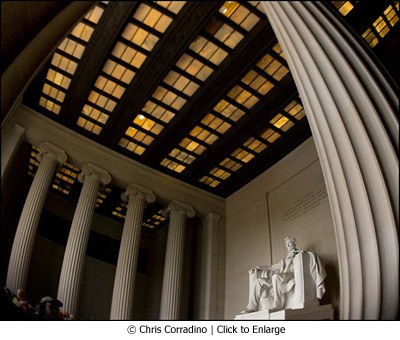
Perhaps the most important consideration in preventing camera shake is your choice of shutter speed. Be cautious of relying solely on lens features such as image stabilization and vibration reduction. These may offer some extra flexibility, but they are far from perfect. There is a simple rule of thumb to determine the slowest shutter speed you can handhold at before risking camera shake. You can remember it by using this equation:
1/The Focal Length being used
- For example, if you are using a 100mm lens on a full frame camera, the slowest shutter speed you can safely handhold at is 1/100.
- If you are using a 400mm lens, the minimum shutter speed recommended is 1/400.
- With a 200mm lens, the slowest shutter would be 1/200.
Please note: Like most rules, there are exceptions to this guideline. Regardless of the lens you are using, the slowest shutter speed you should ever handhold at is about 1/90th of a second. Anything slower can result in soft images.
Also, if your camera has a smaller sensor with a crop factor of 1.5x, 1.6x, or 2x, that needs to be factored into the equation. For example, the Nikon D7000 has a crop factor of 1.5, therefore the effective focal length of a 100mm lens is actually 150mm. As such, the slowest recommended shutter speed for handholding this camera and lens is 1/150.
Considering the low light levels of the Lincoln Memorial, I had to raise my ISO to 800 and use a wide aperture of f4 in order to achieve a shutter speed of 1/100.
Brace Your Camera
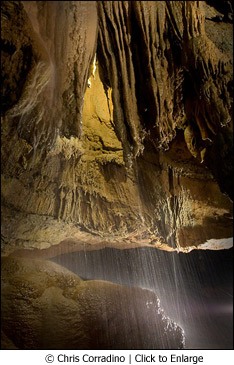
Any stable platform can be used as a makeshift tripod. I've used downed trees, fence posts, boulders, and even my camera bag to steady the camera in a pinch. When visiting the Tuckaleechee Caverns beneath the Great Smoky Mountains in Tennessee, tripod use was not permitted since the cave formations are quite brittle. An accidental bump from a tripod leg can easily break the delicate stalagmites that have formed over hundreds of years. I locked the tripod away in the trunk, and descended into the dark world below.
It was in this darkness that I came across a rare underground waterfall named "Silver Falls". In order to blur the water, I wanted to use a slower shutter speed of about 1/15. Of course handholding at that speed would have made for a completely blurry image. Luckily, there was a metal safety rail to support and balance the camera. It wasn't nearly as ideal as a tripod, but with a bit of ingenuity, it worked quite well. The trick was to place the lens barrel on the rail while the back of the camera was supported by my face. Rather than attempting to press the shutter button and jostle the setup, I used the camera's two second timer.
Proper Handholding Technique
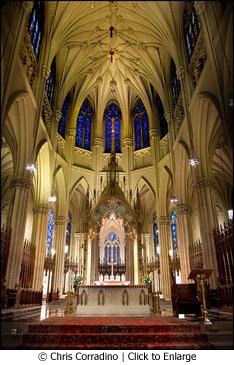
There are times you will need to break the minimum handholding guidelines I detailed in tip number one. If there is nothing to rest the camera on, and you have to use a slow shutter speed to get enough light into the camera, it is still possible to make a sharp photo. This was certainly the case when I photographed the impressive nave of St. Patrick's Cathedral in New York. I needed a shutter speed of 1/40th to properly expose the scene. Tripods are not permitted inside and I felt it would be disruptive to rest the camera on a pew, so the only option was to handhold.
To do this, bring both elbows in against your sides and support the camera from underneath with the left hand. The right hand grasps the camera grip and your index finger rests on the shutter button. The viewfinder should be pressed firmly but gently against the eye. To balance yourself, stand with your feet flat and shoulder width apart. Some photographers recommend holding your breath, I find this actually creates unnecessary tension. Instead, I prefer to breathe easy, relax, and steady myself before pressing the shutter.
Learn more great photography tricks at our online photography course.


